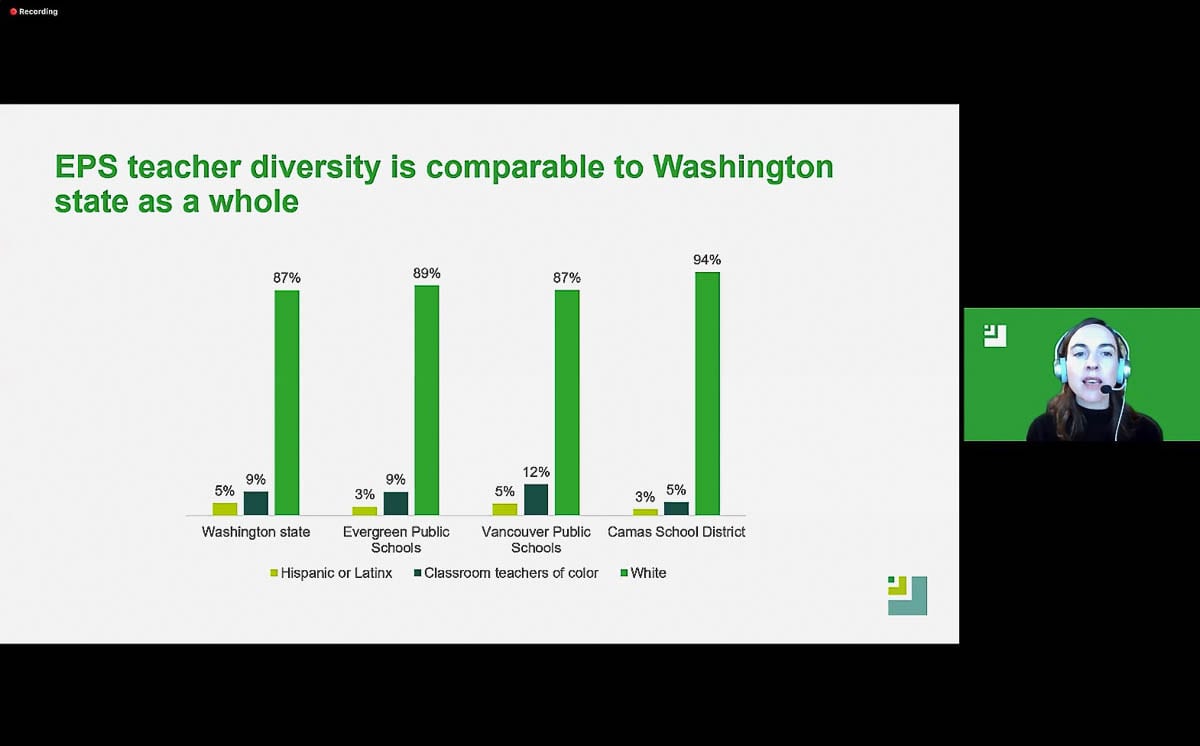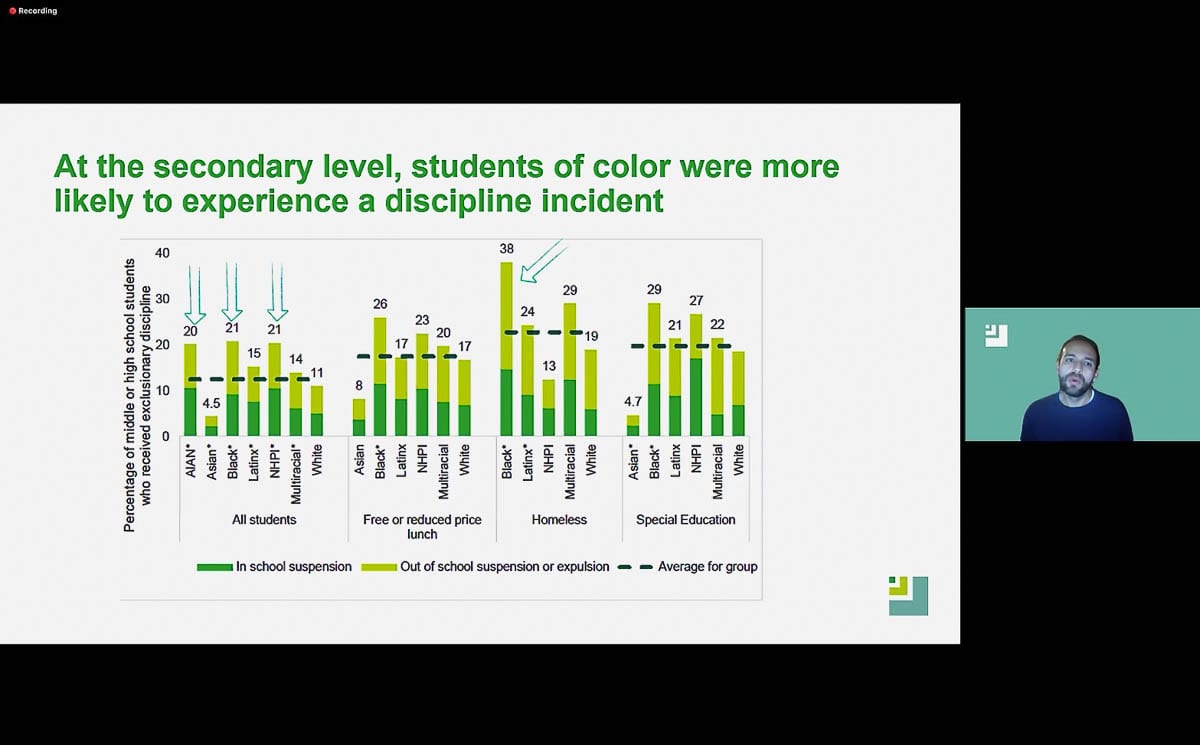Research finds district meets status quo in diverse hires and has higher frequency of discipline for students of color
VANCOUVER — In a special work session earlier this week, members of the Evergreen Public Schools (EPS) board heard the results of an equity audit commissioned earlier this fall.
The Dec. 15 meeting covered a wide range of equity factors in the district and was presented by Education Northwest; a nonprofit that conducts research for school districts. The organization featured four of their researchers at the virtual meeting, with each explaining a different component to the findings.
In a nutshell, the group found EPS was doing neither an especially good or bad job at bringing in diverse educators and creating equity among students of different ethnicities. In short, the district is meeting the status quo.

“Evergreen is in this transformational stage,” said Mary Martinez-Wenzl, a senior advisor at Education Northwest. “You have a new director of equity and inclusion, [and] this equity audit is one of the first, kind of, big efforts in that area. There’s also all this professional learning happening with courageous conversations at an incredible pace. It’s very unusual for a district to have so many people go through that training in such a short period of time.”
Three key areas of findings focused on hiring practices and trends at EPS, learning opportunities and discipline frequency of EPS students and recommendations for the district; short and long term.
When it comes to hiring practices, the district was found to be fairing much the same as it’s peer districts in the region. The number of teachers who are White, Hispanic and teachers of color working in EPS were nearly identical to the Washington state averages.
Compared to Vancouver and Camas schools, EPS was more diverse than Camas, but less diverse than Vancouver. Since 2014, the EPS students of color population has increased by 7 percent, while staff of color have only increased by an average of 2.5 percent.
“The demographics, overall, of Evergreen teachers and administrators do not reflect the demographics of the district’s students and families,” Martinez-Wenzl said. “This is a district where your employees are represented by several labor unions, and those labor union agreements have a big influence on how things work, especially when it comes to hiring.”
When it comes to learning opportunities and discipline, Manuel Vasquez, another senior adviser from Education Northwest, presented the team’s findings. Overall, Asian and White students are more often utilizing rigorous learning opportunities than students of color.

He also explained that in EPS, students of color are more often disciplined for disruptive behavior, bullying, destruction of property, and drug or alcohol use. In many cases, the disproportion was observed at 5 or more percentage points.
“Overall, receiving these disproportionate rates are along race and ethnicity lines, and when we take into account other factors like participation in special programs, or socio-economic status, it helps explain some of those differences,” Vasquez said. “But, you know, we still see that these differences persist even when factoring in those other variables. Discipline results in a loss of instructional time, and loss of opportunities to learn. So among students who received one or more discipline incident … students who are black, multiracial, or even students who were experiencing homelessness, lost more instructional time for discipline incidents.”
The likelihood of a student of color experiencing a disciplinary incident at EPS was increased by as much as 17 percent with the compounded factors of homelessness, low financial status or need for special education.
On the subject of learning opportunities and discipline, Evergreen was, again, inline with trends in other districts, but Superintendent Mike Merlino was quick to add he was not comforted by that fact.
“If you look at our district demographics and expected this is what you would see, and then you see it, then that’s a version of racism,” Merlino said, quoting Klarissa Hightower, EPS director of equity and inclusion. “I’m not interested in being similar or tracking. I am interested in the recommendations, and then what can we do? What can we put in place to impact our students? So that we have different outcomes, and we have positive outcomes and opportunities for our kids.”
When the team from Education Northwest gave their final recommendations to the district, it was broken down into short term, medium term and long term actions.
In the realm of short term, the team recommended EPS review the audit report fully, craft and issue a public statement acknowledging inequity and move forward with a commitment to correct it via an affirmative action plan. There were also specific recommendations delivered to Human Resources.
Medium term actions included creating an Equity Advisory Committee, continuing district-wide professional learning focused on equity (involving understanding biases) and complete phase two of the equity audit.
Long term action recommendations, which were denoted at requiring six or more months to adopt, included analyzing district and school processes for dealing with hate, bias and discrimination, monitor disipline rates for signs of inequity and “develop and strengthen trust and relationships with community partners to support students and families of color.”
A video of the full presentation can be found here.




